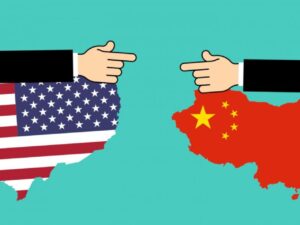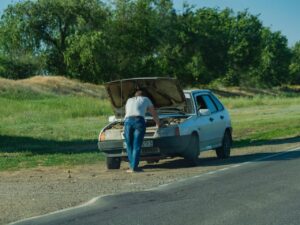Silence is the third overtly religious film from director Martin Scorsese, following The Last Temptation of Christ and Kundun. It’s a film that Scorsese has been trying to make for more than two decades, based on the novel by Shusaku Endo about two Jesuit priests who travel to Japan in order to find their mentor and continue his mission to propagate Catholicism in the 17th century. While the spiritual perspective may be met with some suspicion, the overriding themes are universal.
It’s the second reworking of Endo’s novel after it was initially adapted by Masahiro Shinoda in 1971. Scorsese struggled to get the film financed, which resulted in a number of delays in the project’s development through the years. Silence’s original cast included: Daniel Day Lewis, Gael Garcia Bernal and Benicio Del Toro. When the production eventually got the green light, Liam Neeson, Andrew Garfield and Adam Driver were assigned to the lead roles.
While the persecution of Christians has continued through the ages, the release of Silence comes at a time when it has not only increased, but spread to more corners of the globe. Viewed as a foreign, “colonial” threat purveying the ideologies of the West, many Christians face persecution in countries with nationalist religious movements, driven by government or in some incidents, extremists. This is the case in Silence, in which a grand Inquisitor was appointed to root out, punish and even execute Japanese Christians, who didn’t denounce their faith by trampling on a tablet depicting Christianity.
We are introduced to Father Ferreira, played with steely-eyed sincerity by Neeson, a man rumoured to have committed apostasy after bearing witness to the ruthless torture of other monks, facing terrible acts of physical and psychological hardship. The journey begins with Rodrigues and Garupe, two Jesuit priests who feel led to travel to Japan in search of their mentor. Travelling under the cover of night and hidden by a secretly Christian village, they continue their ministry as they slowly learn of Ferreira and attract the Inquisitor’s suspicions.

“Between the dust and the stars lies… Middle Earth.”
The lead actors all lost a considerable amount of weight and underwent tutelage, or some form of religious retreat in order to get into the spiritual dimension of their characters. While Bernal and del Toro would have added an extra layer of authenticity to the accent and representation of the Portuguese men, Garfield and Driver immerse themselves in their performances and carry a truth that overpowers minor inaccuracies. Yôsuke Kubozuka embodies the role of Kichijiro like the antithesis of Kikuchiyo as played by Toshirô Mifune in The Seven Samurai, lacing the story together with shameful treachery instead of bold heroics. Then, to round off a solid ensemble Issei Ogata delivers a noteworthy and devilishly charming performance as “The Old Samurai”.
Perhaps it’s Garfield’s role in Hacksaw Ridge that further cements the film’s parallels with Unbroken. All three films are based on true stories, which deal with adversity, perseverance, persecution, the darkness of the heart and the stubbornness of the human spirit. The historical permanence and timeless themes make them all equally powerful in terms of emotional and physical resilience. While Hacksaw Ridge and Unbroken are set during World War II, the systematised uprooting of a religion and the persecution of one group over another has a resonance with the events depicted in Silence.
Scorsese must have been influenced by The Mission in 1986. This haunting human drama also dealt with Jesuit priests and was released around the same time that he began his work on the adaptation. Silence is reminiscent of Terrence Malick’s films in terms of its elemental visuals, and the way it juxtaposes man and nature. It’s a mixture of blood and mud as our adventurers undertake a dangerous undercover mission into the heart of 17th century Japan. They struggle to trust and encounter great suffering, acting like spies beyond enemy lines. While not as ornate, the subject matter, pioneering spirit, historical significance, ideological fillibustering and even some of the trappings reflect aspects from the film, Luther.
Silence is a challenging, powerful and unsettling human drama that tackles despair, faith, sacrifice, suffering, physical and psychological torture. Scorsese’s complex representation of characters ensures that everyone has a measure of good and bad, preventing us from simply dismissing one standpoint over another. This grey area generates plenty of tension as believers are put on trial before man and God, forced to decide between rejecting their faith or accepting the road to martyrdom. The right to self-determination and freedom of religion is examined within the context of a country desperately trying to oust insurgents, whose personal envoy to save souls has far-reaching macro effects for Japan’s nationalism and international trade.
It’s a haunting film that will leave you in silence and stay with you for some time. While somewhat slow burning in terms of pacing, this old world feel helps you to sink into the suspended environment and story. We’re treated to beautiful vistas as the mountain meets the sea only to find ourselves on edge as the Inquisitor’s ruthless agenda is carried out with the sudden, sharp force of a sword. At almost 3 hours, it’s a film you can lose yourself in… enchanted by the performances, mesmerised by the visuals and compelled by the tide of dramatic tension.
The bottom line: Haunting
 Release date: Now showing
Release date: Now showing
Book Tickets at Ster-Kinekor
Book Tickets at Nu Metro
Catch more movie reviews at SPL!NG





